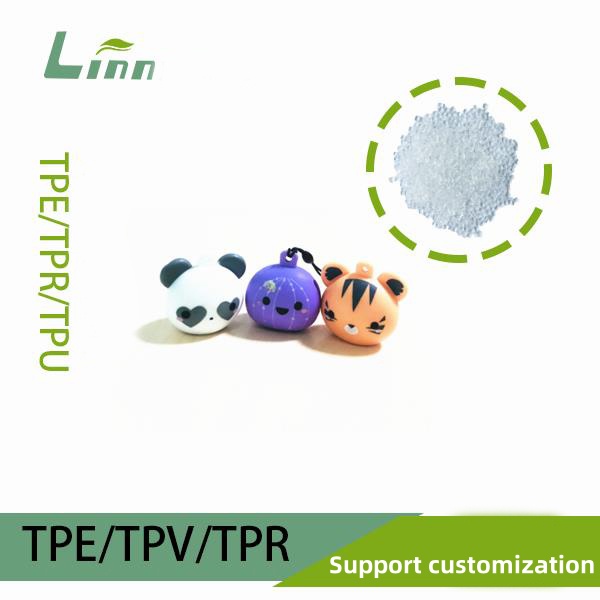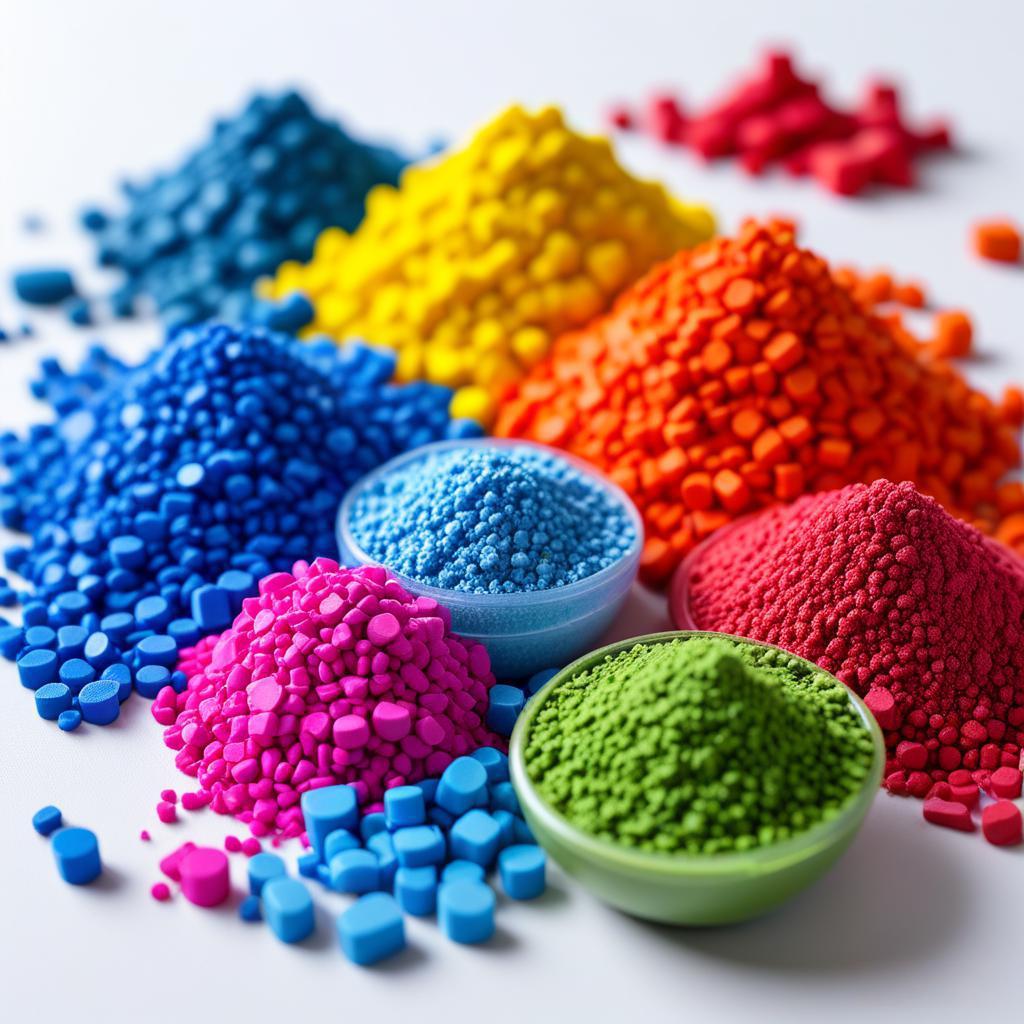Having spent over a decade in the TPE (thermoplastic elastomer) industry, I’ve seen my fair share of challenges when it comes to selecting the right flame retardants for TPE materials. Whether you’re a manufacturer, a product designer, or just curious about TPE applications, figuring out how to differentiate between high-quality and subpar flame retardants can feel like navigating a maze. Poor flame retardants can compromise safety, degrade material performance, or even fail to meet regulatory standards. In this article, I’ll walk you through my tried-and-true methods for evaluating TPE flame retardants, drawing from real-world experience and industry standards. My goal is to equip you with practical knowledge to make informed decisions and ensure your TPE products are both safe and reliable.

Why Flame Retardants Matter for TPE
TPE materials are prized for their flexibility, durability, and versatility, making them a go-to choice for applications like cables, automotive parts, and consumer electronics. However, TPE is inherently flammable, which poses risks in environments where fire safety is critical. Adding flame retardants reduces the material’s flammability, slows flame spread, and minimizes smoke production. But not all flame retardants are created equal—some perform better, some are safer for the environment, and others are more cost-effective. Knowing how to evaluate their quality is essential for ensuring compliance with safety standards like UL 94 and delivering products that stand the test of time.
Step 1: Understand the Types of Flame Retardants for TPE
Before diving into quality evaluation, it’s worth understanding the main types of flame retardants used in TPE. Each type has its strengths and weaknesses, which influence their performance and suitability.
Halogenated Flame Retardants: These contain bromine or chlorine and are highly effective at suppressing flames. However, they can release toxic gases during combustion, raising environmental and health concerns.
Non-Halogenated (Halogen-Free) Flame Retardants: Often based on phosphorus, nitrogen, or mineral compounds (e.g., aluminum hydroxide), these are more environmentally friendly but may require higher loading levels, which can affect TPE’s mechanical properties.
Intumescent Flame Retardants: These form a protective char layer when exposed to heat, insulating the material from flames. They’re often used in combination with other retardants for enhanced performance.
In my experience, the choice of flame retardant depends on the application. For instance, in consumer electronics, halogen-free options are increasingly preferred due to regulations like RoHS. Understanding these types sets the stage for evaluating their quality.

Step 2: Evaluate Flame Retardant Performance
The primary measure of a flame retardant’s quality is its ability to enhance TPE’s fire resistance. Here’s how I assess performance:
1. UL 94 Flammability Rating
The UL 94 standard is the gold standard for evaluating flame retardancy in plastics. It classifies materials based on their burning behavior, with ratings like V-0, V-1, and V-2 (V-0 being the most stringent). A high-quality flame retardant should achieve at least a V-1 or V-0 rating for TPE in critical applications.
Test Tip: Request UL 94 test reports from your supplier. If possible, conduct in-house testing using a UL 94 flame chamber to verify claims.
2. Limiting Oxygen Index (LOI)
The LOI measures the minimum oxygen concentration required to sustain combustion. TPE with high-quality flame retardants typically has an LOI of 28% or higher, compared to untreated TPE’s LOI of around 18-20%. A higher LOI indicates better flame resistance.
Practical Note: I often use LOI as a quick benchmark when comparing flame retardants. Suppliers should provide LOI data, but independent testing per ASTM D2863 ensures accuracy.
3. Smoke Density and Toxicity
A good flame retardant not only prevents flames but also minimizes smoke and toxic gas emissions. Halogenated retardants can produce dense, toxic smoke, which is a drawback in enclosed spaces. Non-halogenated options, like phosphorus-based retardants, often perform better in this regard.
Evaluation Method: Check for compliance with standards like IEC 60695-6-30 for smoke density or EN 45545-2 for toxicity in transportation applications.

Step 3: Assess Compatibility with TPE
A flame retardant might excel in fire suppression but wreak havoc on TPE’s mechanical or aesthetic properties. Here’s what I look for to ensure compatibility:
Mechanical Properties: High loadings of flame retardants (especially mineral-based ones) can reduce TPE’s tensile strength, elongation, or flexibility. A quality retardant maintains a balance, keeping tensile strength above 10 MPa and elongation at break above 200% (per ASTM D638).
Processing Stability: Some flame retardants degrade during high-temperature processing (e.g., injection molding at 180-220°C), causing discoloration or odor. I test samples for color stability and odor after processing.
Surface Quality: Poor-quality retardants can cause blooming (white powdery residue) or uneven dispersion, affecting the TPE’s appearance. Inspect molded parts under a microscope for uniformity.
In one project, I worked with a cable manufacturer who noticed blooming after adding a phosphorus-based retardant. Switching to a better-dispersed, halogen-free retardant solved the issue without compromising flame resistance.
Step 4: Check Environmental and Regulatory Compliance
With increasing scrutiny on environmental impact, a high-quality flame retardant must comply with global regulations. Here are key standards to verify:
RoHS Compliance: Ensures the retardant is free of restricted substances like certain brominated compounds.
REACH Compliance: Confirms the retardant meets EU chemical safety requirements (ECHA REACH).
Low VOC Emissions: For automotive or indoor applications, low volatile organic compound (VOC) emissions are critical, per standards like VDA 278.
I always request a Material Safety Data Sheet (MSDS) and third-party test reports from suppliers to confirm compliance. If you’re exporting products, double-check regional regulations, as requirements vary (e.g., California’s Proposition 65).

Step 5: Evaluate Cost-Effectiveness
While performance and safety are paramount, cost plays a role in decision-making. High-quality flame retardants don’t always mean the most expensive ones. Consider:
Loading Levels: Some retardants require higher concentrations (e.g., 20-30% by weight), increasing material costs. A quality retardant achieves desired performance at 10-15% loading.
Processing Efficiency: Retardants that don’t require special equipment or extended processing times save on production costs.
Long-Term Durability: A slightly pricier retardant that enhances product lifespan can be more cost-effective than a cheaper one that fails prematurely.
In my experience, halogen-free retardants are often pricier upfront but save costs in the long run due to regulatory compliance and market demand for eco-friendly materials.
Comparison Table of Flame Retardant Types
To help you choose the right flame retardant, here’s a comparison of common types used in TPE:
|
Type |
Flame Resistance |
Environmental Impact |
Mechanical Impact |
Cost |
Applications |
|---|---|---|---|---|---|
|
Halogenated |
High (V-0) |
High (toxic smoke) |
Minimal |
Low |
Cables, electronics (non-regulated) |
|
Non-Halogenated |
Moderate (V-1/V-0) |
Low (eco-friendly) |
Moderate (higher loading) |
High |
Automotive, consumer goods |
|
Intumescent |
High (V-0) |
Low (char formation) |
High (stiffness) |
High |
Structural components, coatings |
Step 6: Practical Testing in Real-World Conditions
No matter how promising a flame retardant’s specs look on paper, real-world testing is non-negotiable. Here’s my testing protocol:
Sample Preparation: Create TPE samples with the flame retardant at recommended loading levels.
Lab Testing: Conduct UL 94, LOI, and mechanical tests (tensile strength, elongation) in a controlled environment.
Application-Specific Testing: Simulate the product’s end-use conditions. For example, for automotive cables, test for heat aging (ISO 6722) or abrasion resistance.
Pilot Production: Run a small production batch to check for processing issues like clogging, odor, or mold release problems.
A few years ago, I helped a client select a flame retardant for TPE-insulated wires. Initial lab tests showed a halogenated retardant performed well, but pilot production revealed excessive smoke during processing. Switching to a nitrogen-based, halogen-free retardant resolved the issue while meeting UL 94 V-0 requirements.

Common Pitfalls and How to Avoid Them
Over the years, I’ve seen a few recurring mistakes when evaluating flame retardants. Here’s how to steer clear:
Relying Solely on Supplier Claims: Always verify performance with independent testing. Suppliers may exaggerate LOI or UL 94 ratings.
Ignoring Processing Conditions: A retardant that works well in lab-scale extrusion may fail in high-speed injection molding. Test under actual production conditions.
Overlooking Regulatory Changes: Flame retardant regulations evolve rapidly. Stay updated on RoHS, REACH, and regional standards to avoid compliance issues.
My Personal Take: Balancing Performance and Responsibility
One of the most rewarding projects I worked on was developing flame-retardant TPE for a medical device housing. The client needed a V-0 rating, low smoke emissions, and compliance with strict biocompatibility standards. After testing multiple options, we settled on a phosphorus-based, halogen-free retardant. The final product not only passed all safety tests but also gained market traction for its eco-friendly profile. This experience reinforced my belief that choosing a flame retardant isn’t just about meeting technical specs—it’s about balancing performance, safety, and environmental responsibility.

Frequently Asked Questions
To round out your understanding of TPE flame retardants, here are some common questions I’ve encountered, along with my answers:
Q1: How can I tell if a flame retardant is truly halogen-free?
A: Request a detailed MSDS and third-party test reports confirming the absence of halogens. You can also conduct an elemental analysis (e.g., XRF spectroscopy) to detect chlorine or bromine.
Q2: Do flame retardants affect TPE’s recyclability?
A: Some retardants, especially mineral-based ones, can complicate recycling by altering TPE’s properties. Halogen-free retardants are generally more recyclable, but always test the recycled material’s performance.
Q3: What’s the shelf life of flame-retardant TPE compounds?
A: Properly stored (cool, dry conditions), TPE with flame retardants can last 1-2 years without degradation. Check for changes in color, odor, or flowability before processing.
Q4: Can I mix different flame retardants for better performance?
A: Yes, synergistic blends (e.g., phosphorus and nitrogen-based retardants) can enhance performance. However, consult with your supplier and test thoroughly, as improper mixing can reduce efficacy or cause processing issues.
Closing Thoughts
Selecting a high-quality flame retardant for TPE is a journey that requires technical know-how, careful testing, and an eye on regulatory and environmental factors. By focusing on performance metrics like UL 94 and LOI, ensuring compatibility with TPE’s properties, and verifying compliance, you can confidently choose a retardant that meets your needs. My years in the industry have taught me that the right flame retardant doesn’t just enhance safety—it elevates the entire product. If you’re grappling with flame retardant choices or have specific questions, I’m here to help. Let’s keep the conversation going!





